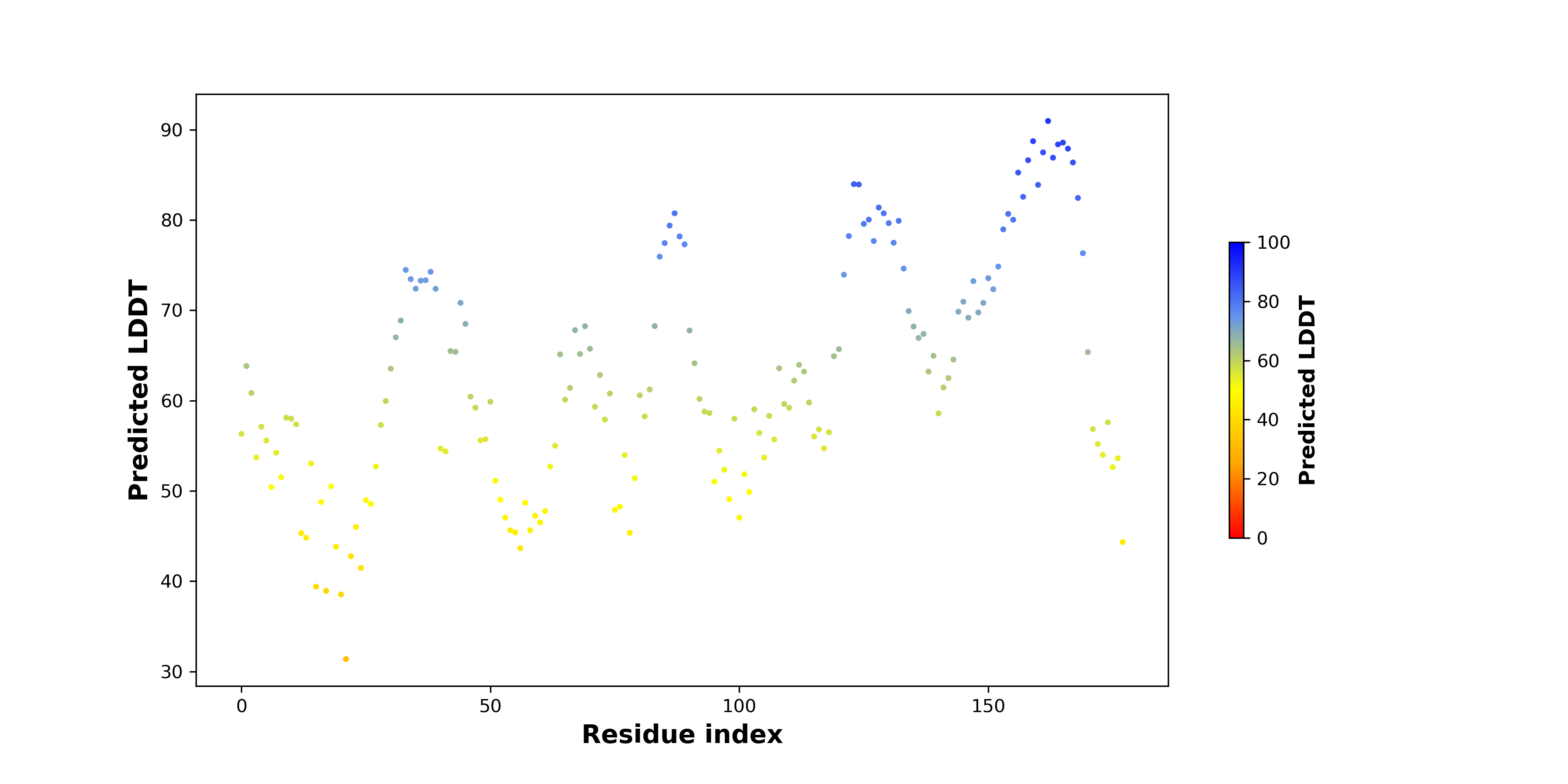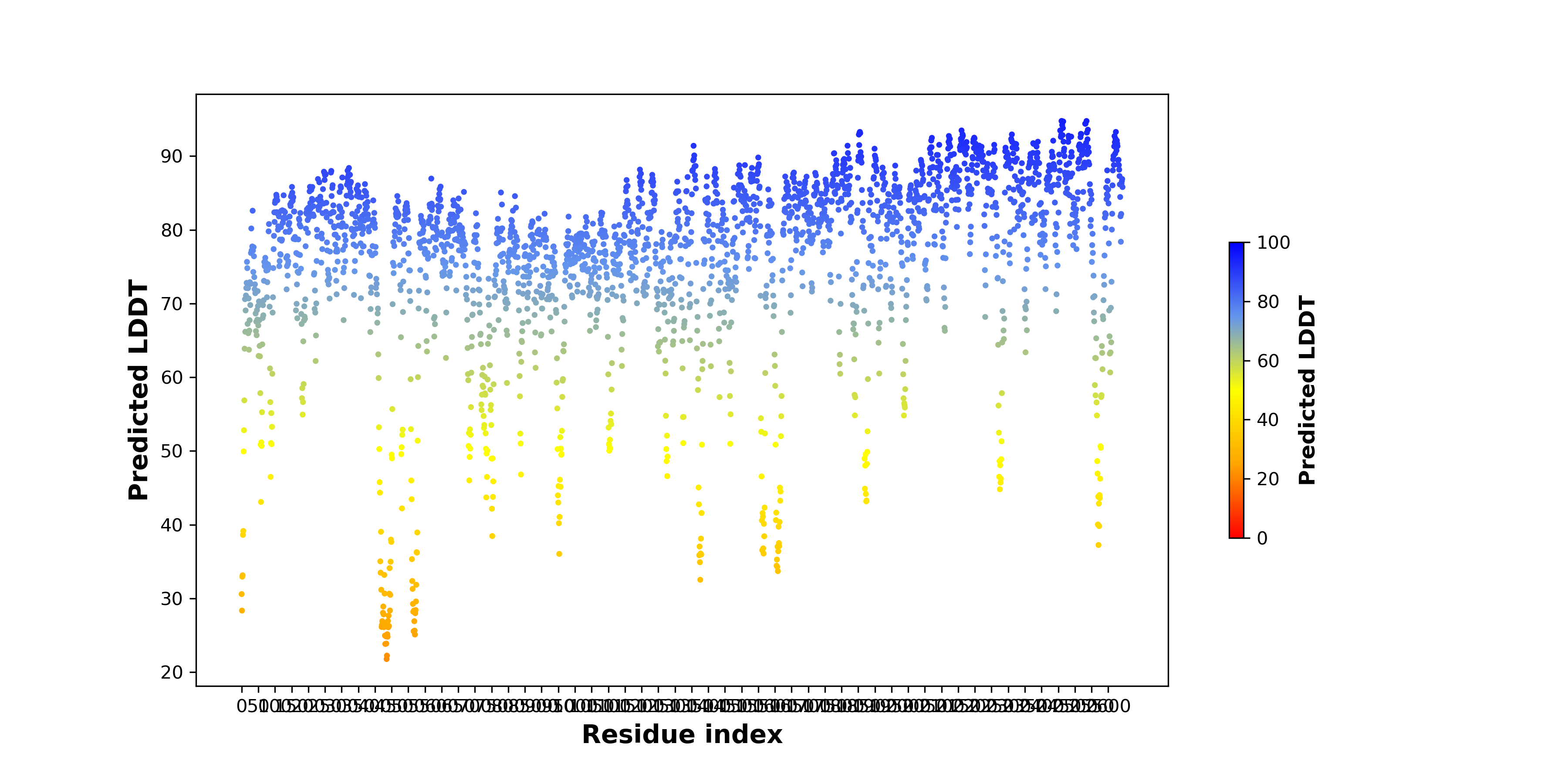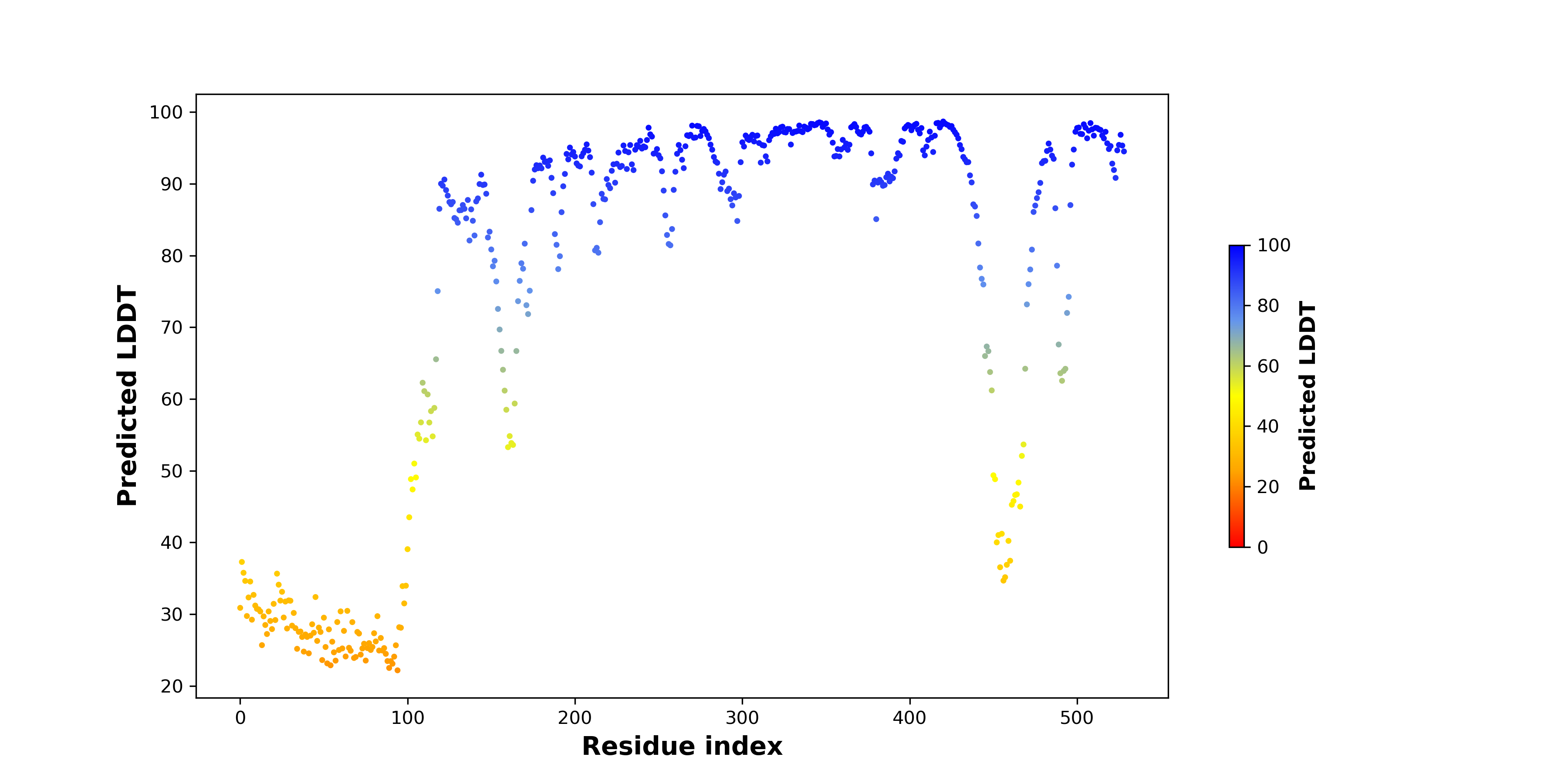| UTHEALTH HOME ABOUT SBMI A-Z WEBMAIL INSIDE THE UNIVERSITY |

|
|||||||
|
Fusion Protein:PCNP-ATR |
Fusion Protein Summary |
 Fusion gene summary Fusion gene summary |
| Fusion partner gene information | Fusion gene name: PCNP-ATR | FusionPDB ID: 63406 | FusionGDB2.0 ID: 63406 | Hgene | Tgene | Gene symbol | PCNP | ATR | Gene ID | 57092 | 390502 |
| Gene name | PEST proteolytic signal containing nuclear protein | serpin family A member 2 (gene/pseudogene) | |
| Synonyms | - | ARGS|ATR|PIL|SERPINA2P|psiATR | |
| Cytomap | 3q12.3 | 14q32.13 | |
| Type of gene | protein-coding | protein-coding | |
| Description | PEST proteolytic signal-containing nuclear proteinPEST-containing nuclear protein | putative alpha-1-antitrypsin-related proteinserine (or cysteine) proteinase inhibitor, clade A (alpha-1 antiproteinase, antitrypsin), member 2serpin A2serpin peptidase inhibitor, clade A (alpha-1 antiproteinase, antitrypsin), member 2, pseudogene | |
| Modification date | 20200313 | 20200313 | |
| UniProtAcc | . | P46100 | |
| Ensembl transtripts involved in fusion gene | ENST ids | ENST00000265260, ENST00000296024, ENST00000469941, ENST00000486406, | ENST00000350721, ENST00000383101, |
| Fusion gene scores for assessment (based on all fusion genes of FusionGDB 2.0) | * DoF score | 14 X 13 X 3=546 | 9 X 8 X 5=360 |
| # samples | 14 | 10 | |
| ** MAII score | log2(14/546*10)=-1.96347412397489 possibly effective Gene in Pan-Cancer Fusion Genes (peGinPCFGs). DoF>8 and MAII<0 | log2(10/360*10)=-1.84799690655495 possibly effective Gene in Pan-Cancer Fusion Genes (peGinPCFGs). DoF>8 and MAII<0 | |
| Context (manual curation of fusion genes in FusionPDB) | PubMed: PCNP [Title/Abstract] AND ATR [Title/Abstract] AND fusion [Title/Abstract] | ||
| Most frequent breakpoint (based on all fusion genes of FusionGDB 2.0) | PCNP(101298848)-ATR(142185375), # samples:3 | ||
| Anticipated loss of major functional domain due to fusion event. | PCNP-ATR seems lost the major protein functional domain in Hgene partner, which is a CGC by not retaining the major functional domain in the partially deleted in-frame ORF. PCNP-ATR seems lost the major protein functional domain in Hgene partner, which is a CGC by not retaining the major functional domain in the partially deleted in-frame ORF. PCNP-ATR seems lost the major protein functional domain in Hgene partner, which is a essential gene by not retaining the major functional domain in the partially deleted in-frame ORF. PCNP-ATR seems lost the major protein functional domain in Hgene partner, which is a essential gene by not retaining the major functional domain in the partially deleted in-frame ORF. | ||
| * DoF score (Degree of Frequency) = # partners X # break points X # cancer types ** MAII score (Major Active Isofusion Index) = log2(# samples/DoF score*10) |
 Gene ontology of each fusion partner gene with evidence of Inferred from Direct Assay (IDA) from Entrez Gene ontology of each fusion partner gene with evidence of Inferred from Direct Assay (IDA) from Entrez |
| Partner | Gene | GO ID | GO term | PubMed ID |
| Hgene | PCNP | GO:0016567 | protein ubiquitination | 14741369 |
| Hgene | PCNP | GO:0043161 | proteasome-mediated ubiquitin-dependent protein catabolic process | 14741369 |
 Fusion gene breakpoints across PCNP (5'-gene) Fusion gene breakpoints across PCNP (5'-gene)* Click on the image to open the UCSC genome browser with custom track showing this image in a new window. |
 |
 Fusion gene breakpoints across ATR (3'-gene) Fusion gene breakpoints across ATR (3'-gene)* Click on the image to open the UCSC genome browser with custom track showing this image in a new window. |
 |
Top |
Fusion Gene Sample Information |
 Fusion gene information from FusionGDB2.0. Fusion gene information from FusionGDB2.0. |
 Fusion gene information from two resources (ChiTars 5.0 and ChimerDB 4.0) Fusion gene information from two resources (ChiTars 5.0 and ChimerDB 4.0)* All genome coordinats were lifted-over on hg19. * Click on the break point to see the gene structure around the break point region using the UCSC Genome Browser. |
| Source | Disease | Sample | Hgene | Hchr | Hbp | Hstrand | Tgene | Tchr | Tbp | Tstrand |
| ChimerDB4 | PRAD | TCGA-YL-A9WK-01A | PCNP | chr3 | 101298848 | - | ATR | chr3 | 142185375 | - |
| ChimerDB4 | PRAD | TCGA-YL-A9WK-01A | PCNP | chr3 | 101298848 | + | ATR | chr3 | 142185375 | - |
| ChimerDB4 | PRAD | TCGA-YL-A9WK | PCNP | chr3 | 101298848 | + | ATR | chr3 | 142185375 | - |
Top |
Fusion ORF Analysis |
 Fusion information from ORFfinder translation from full-length transcript sequence from FusionPDB. Fusion information from ORFfinder translation from full-length transcript sequence from FusionPDB. |
| Henst | Tenst | Hgene | Hchr | Hbp | Hstrand | Tgene | Tchr | Tbp | Tstrand | Seq length (transcript) | BP loci (transcript) | Predicted start (transcript) | Predicted stop (transcript) | Seq length (amino acids) |
| ENST00000265260 | PCNP | chr3 | 101298848 | + | ENST00000350721 | ATR | chr3 | 142185375 | - | 1840 | 400 | 58 | 1647 | 529 |
| ENST00000265260 | PCNP | chr3 | 101298848 | + | ENST00000383101 | ATR | chr3 | 142185375 | - | 1839 | 400 | 58 | 1647 | 529 |
| ENST00000296024 | PCNP | chr3 | 101298848 | + | ENST00000350721 | ATR | chr3 | 142185375 | - | 1739 | 299 | 20 | 1546 | 508 |
| ENST00000296024 | PCNP | chr3 | 101298848 | + | ENST00000383101 | ATR | chr3 | 142185375 | - | 1738 | 299 | 20 | 1546 | 508 |
 DeepORF prediction of the coding potential based on the fusion transcript sequence of in-frame fusion genes. DeepORF is a coding potential classifier based on convolutional neural network by comparing the real Ribo-seq data. If the no-coding score < 0.5 and coding score > 0.5, then the in-frame fusion transcript is predicted as being likely translated. DeepORF prediction of the coding potential based on the fusion transcript sequence of in-frame fusion genes. DeepORF is a coding potential classifier based on convolutional neural network by comparing the real Ribo-seq data. If the no-coding score < 0.5 and coding score > 0.5, then the in-frame fusion transcript is predicted as being likely translated. |
| Henst | Tenst | Hgene | Hchr | Hbp | Hstrand | Tgene | Tchr | Tbp | Tstrand | No-coding score | Coding score |
| ENST00000265260 | ENST00000350721 | PCNP | chr3 | 101298848 | + | ATR | chr3 | 142185375 | - | 0.000382213 | 0.9996178 |
| ENST00000265260 | ENST00000383101 | PCNP | chr3 | 101298848 | + | ATR | chr3 | 142185375 | - | 0.00038774 | 0.9996123 |
| ENST00000296024 | ENST00000350721 | PCNP | chr3 | 101298848 | + | ATR | chr3 | 142185375 | - | 0.000592857 | 0.9994072 |
| ENST00000296024 | ENST00000383101 | PCNP | chr3 | 101298848 | + | ATR | chr3 | 142185375 | - | 0.000600862 | 0.9993992 |
Top |
Fusion Amino Acid Sequences |
 For individual full-length fusion transcript sequence from FusionPDB, we ran ORFfinder and chose the longest ORF among the all predicted ones. For individual full-length fusion transcript sequence from FusionPDB, we ran ORFfinder and chose the longest ORF among the all predicted ones. |
| >FusionGDB ID_FusionGDB isoform ID_FGname_Hgene_Hchr_Hbp_Henst_Tgene_Tchr_Tbp_Tenst_length(fusion AA) seq_BP >63406_63406_1_PCNP-ATR_PCNP_chr3_101298848_ENST00000265260_ATR_chr3_142185375_ENST00000350721_length(amino acids)=529AA_BP=109 MVVGRGRDVLGVAAGEAAAGKMADGKAGDEKPEKSQRAGAAGGPEEEAEKPVKTKTVSSSNGGESSSRSAEKRSAEEEAADLPTKPTKIS KFGFAIGSQTTKKASAISIKLGSSVDGSSSTLSMSTHFKMLKKLVEEATFSEILIPLQSVMIPTLPSILGTHANHASHEPFPGHWAYIAG FDDMVEILASLQKPKKISLKGSDGKFYIMMCKPKDDLRKDCRLMEFNSLINKCLRKDAESRRRELHIRTYAVIPLNDECGIIEWVNNTAG LRPILTKLYKEKGVYMTGKELRQCMLPKSAALSEKLKVFREFLLPRHPPIFHEWFLRTFPDPTSWYSSRSAYCRSTAVMSMVGYILGLGD RHGENILFDSLTGECVHVDFNCLFNKGETFEVPEIVPFRLTHNMVNGMGPMGTEGLFRRACEVTMRLMRDQREPLMSVLKTFLHDPLVEW -------------------------------------------------------------- >63406_63406_2_PCNP-ATR_PCNP_chr3_101298848_ENST00000265260_ATR_chr3_142185375_ENST00000383101_length(amino acids)=529AA_BP=109 MVVGRGRDVLGVAAGEAAAGKMADGKAGDEKPEKSQRAGAAGGPEEEAEKPVKTKTVSSSNGGESSSRSAEKRSAEEEAADLPTKPTKIS KFGFAIGSQTTKKASAISIKLGSSVDGSSSTLSMSTHFKMLKKLVEEATFSEILIPLQSVMIPTLPSILGTHANHASHEPFPGHWAYIAG FDDMVEILASLQKPKKISLKGSDGKFYIMMCKPKDDLRKDCRLMEFNSLINKCLRKDAESRRRELHIRTYAVIPLNDECGIIEWVNNTAG LRPILTKLYKEKGVYMTGKELRQCMLPKSAALSEKLKVFREFLLPRHPPIFHEWFLRTFPDPTSWYSSRSAYCRSTAVMSMVGYILGLGD RHGENILFDSLTGECVHVDFNCLFNKGETFEVPEIVPFRLTHNMVNGMGPMGTEGLFRRACEVTMRLMRDQREPLMSVLKTFLHDPLVEW -------------------------------------------------------------- >63406_63406_3_PCNP-ATR_PCNP_chr3_101298848_ENST00000296024_ATR_chr3_142185375_ENST00000350721_length(amino acids)=508AA_BP=88 MADGKAGDEKPEKSQRAGAAGGPEEEAEKPVKTKTVSSSNGGESSSRSAEKRSAEEEAADLPTKPTKISKFGFAIGSQTTKKASAISIKL GSSVDGSSSTLSMSTHFKMLKKLVEEATFSEILIPLQSVMIPTLPSILGTHANHASHEPFPGHWAYIAGFDDMVEILASLQKPKKISLKG SDGKFYIMMCKPKDDLRKDCRLMEFNSLINKCLRKDAESRRRELHIRTYAVIPLNDECGIIEWVNNTAGLRPILTKLYKEKGVYMTGKEL RQCMLPKSAALSEKLKVFREFLLPRHPPIFHEWFLRTFPDPTSWYSSRSAYCRSTAVMSMVGYILGLGDRHGENILFDSLTGECVHVDFN CLFNKGETFEVPEIVPFRLTHNMVNGMGPMGTEGLFRRACEVTMRLMRDQREPLMSVLKTFLHDPLVEWSKPVKGHSKAPLNETGEVVNE -------------------------------------------------------------- >63406_63406_4_PCNP-ATR_PCNP_chr3_101298848_ENST00000296024_ATR_chr3_142185375_ENST00000383101_length(amino acids)=508AA_BP=88 MADGKAGDEKPEKSQRAGAAGGPEEEAEKPVKTKTVSSSNGGESSSRSAEKRSAEEEAADLPTKPTKISKFGFAIGSQTTKKASAISIKL GSSVDGSSSTLSMSTHFKMLKKLVEEATFSEILIPLQSVMIPTLPSILGTHANHASHEPFPGHWAYIAGFDDMVEILASLQKPKKISLKG SDGKFYIMMCKPKDDLRKDCRLMEFNSLINKCLRKDAESRRRELHIRTYAVIPLNDECGIIEWVNNTAGLRPILTKLYKEKGVYMTGKEL RQCMLPKSAALSEKLKVFREFLLPRHPPIFHEWFLRTFPDPTSWYSSRSAYCRSTAVMSMVGYILGLGDRHGENILFDSLTGECVHVDFN CLFNKGETFEVPEIVPFRLTHNMVNGMGPMGTEGLFRRACEVTMRLMRDQREPLMSVLKTFLHDPLVEWSKPVKGHSKAPLNETGEVVNE -------------------------------------------------------------- |
Top |
Fusion Protein Functional Features |
 Four levels of functional features of fusion genes Four levels of functional features of fusion genesGo to FGviewer search page for the most frequent breakpoint (https://ccsmweb.uth.edu/FGviewer/chr3:101298848/chr3:142185375) - FGviewer provides the online visualization of the retention search of the protein functional features across DNA, RNA, protein, and pathological levels. - How to search 1. Put your fusion gene symbol. 2. Press the tab key until there will be shown the breakpoint information filled. 4. Go down and press 'Search' tab twice. 4. Go down to have the hyperlink of the search result. 5. Click the hyperlink. 6. See the FGviewer result for your fusion gene. |
 |
 Main function of each fusion partner protein. (from UniProt) Main function of each fusion partner protein. (from UniProt) |
| Hgene | Tgene |
| . | ATR |
| FUNCTION: Might normally function as a transcriptional repressor. EWS-fusion-proteins (EFPS) may play a role in the tumorigenic process. They may disturb gene expression by mimicking, or interfering with the normal function of CTD-POLII within the transcription initiation complex. They may also contribute to an aberrant activation of the fusion protein target genes. | FUNCTION: Involved in transcriptional regulation and chromatin remodeling. Facilitates DNA replication in multiple cellular environments and is required for efficient replication of a subset of genomic loci. Binds to DNA tandem repeat sequences in both telomeres and euchromatin and in vitro binds DNA quadruplex structures. May help stabilizing G-rich regions into regular chromatin structures by remodeling G4 DNA and incorporating H3.3-containing nucleosomes. Catalytic component of the chromatin remodeling complex ATRX:DAXX which has ATP-dependent DNA translocase activity and catalyzes the replication-independent deposition of histone H3.3 in pericentric DNA repeats outside S-phase and telomeres, and the in vitro remodeling of H3.3-containing nucleosomes. Its heterochromatin targeting is proposed to involve a combinatorial readout of histone H3 modifications (specifically methylation states of H3K9 and H3K4) and association with CBX5. Involved in maintaining telomere structural integrity in embryonic stem cells which probably implies recruitment of CBX5 to telomeres. Reports on the involvement in transcriptional regulation of telomeric repeat-containing RNA (TERRA) are conflicting; according to a report, it is not sufficient to decrease chromatin condensation at telomeres nor to increase expression of telomeric RNA in fibroblasts (PubMed:24500201). May be involved in telomere maintenance via recombination in ALT (alternative lengthening of telomeres) cell lines. Acts as negative regulator of chromatin incorporation of transcriptionally repressive histone MACROH2A1, particularily at telomeres and the alpha-globin cluster in erythroleukemic cells. Participates in the allele-specific gene expression at the imprinted IGF2/H19 gene locus. On the maternal allele, required for the chromatin occupancy of SMC1 and CTCTF within the H19 imprinting control region (ICR) and involved in esatblishment of histone tails modifications in the ICR. May be involved in brain development and facial morphogenesis. Binds to zinc-finger coding genes with atypical chromatin signatures and regulates its H3K9me3 levels. Forms a complex with ZNF274, TRIM28 and SETDB1 to facilitate the deposition and maintenance of H3K9me3 at the 3' exons of zinc-finger genes (PubMed:27029610). {ECO:0000269|PubMed:12953102, ECO:0000269|PubMed:14990586, ECO:0000269|PubMed:20504901, ECO:0000269|PubMed:20651253, ECO:0000269|PubMed:21029860, ECO:0000269|PubMed:22391447, ECO:0000269|PubMed:22829774, ECO:0000269|PubMed:24500201, ECO:0000269|PubMed:27029610}. |
 Retention analysis result of each fusion partner protein across 39 protein features of UniProt such as six molecule processing features, 13 region features, four site features, six amino acid modification features, two natural variation features, five experimental info features, and 3 secondary structure features. Here, because of limited space for viewing, we only show the protein feature retention information belong to the 13 regional features. All retention annotation result can be downloaded at * Minus value of BPloci means that the break pointn is located before the CDS. Retention analysis result of each fusion partner protein across 39 protein features of UniProt such as six molecule processing features, 13 region features, four site features, six amino acid modification features, two natural variation features, five experimental info features, and 3 secondary structure features. Here, because of limited space for viewing, we only show the protein feature retention information belong to the 13 regional features. All retention annotation result can be downloaded at * Minus value of BPloci means that the break pointn is located before the CDS. |
| - Retained protein feature among the 13 regional features. |
| Partner | Gene | Hbp | Tbp | ENST | Strand | BPexon | TotalExon | Protein feature loci | *BPloci | TotalLen | Protein feature | Protein feature note |
| Tgene | ATR | chr3:101298848 | chr3:142185375 | ENST00000350721 | 38 | 47 | 2322_2567 | 2229.0 | 2645.0 | Domain | PI3K/PI4K | |
| Tgene | ATR | chr3:101298848 | chr3:142185375 | ENST00000350721 | 38 | 47 | 2612_2644 | 2229.0 | 2645.0 | Domain | FATC | |
| Tgene | ATR | chr3:101298848 | chr3:142185375 | ENST00000383101 | 37 | 46 | 2322_2567 | 2165.0 | 2581.0 | Domain | PI3K/PI4K | |
| Tgene | ATR | chr3:101298848 | chr3:142185375 | ENST00000383101 | 37 | 46 | 2612_2644 | 2165.0 | 2581.0 | Domain | FATC |
| - Not-retained protein feature among the 13 regional features. |
| Partner | Gene | Hbp | Tbp | ENST | Strand | BPexon | TotalExon | Protein feature loci | *BPloci | TotalLen | Protein feature | Protein feature note |
| Tgene | ATR | chr3:101298848 | chr3:142185375 | ENST00000350721 | 38 | 47 | 1640_2185 | 2229.0 | 2645.0 | Domain | FAT | |
| Tgene | ATR | chr3:101298848 | chr3:142185375 | ENST00000383101 | 37 | 46 | 1640_2185 | 2165.0 | 2581.0 | Domain | FAT | |
| Tgene | ATR | chr3:101298848 | chr3:142185375 | ENST00000350721 | 38 | 47 | 1329_1365 | 2229.0 | 2645.0 | Repeat | Note=HEAT 2 | |
| Tgene | ATR | chr3:101298848 | chr3:142185375 | ENST00000350721 | 38 | 47 | 799_835 | 2229.0 | 2645.0 | Repeat | Note=HEAT 1 | |
| Tgene | ATR | chr3:101298848 | chr3:142185375 | ENST00000383101 | 37 | 46 | 1329_1365 | 2165.0 | 2581.0 | Repeat | Note=HEAT 2 | |
| Tgene | ATR | chr3:101298848 | chr3:142185375 | ENST00000383101 | 37 | 46 | 799_835 | 2165.0 | 2581.0 | Repeat | Note=HEAT 1 |
Top |
Fusion Protein Structures |
 PDB and CIF files of the predicted fusion proteins PDB and CIF files of the predicted fusion proteins * Here we show the 3D structure of the fusion proteins using Mol*. AlphaFold produces a per-residue confidence score (pLDDT) between 0 and 100. Model confidence is shown from the pLDDT values per residue. pLDDT corresponds to the model’s prediction of its score on the local Distance Difference Test. It is a measure of local accuracy (from AlphfaFold website). To color code individual residues, we transformed individual PDB files into CIF format. |
| Fusion protein PDB link (fusion AA seq ID in FusionPDB) | Hgene | Hchr | Hbp | Hstrand | Tgene | Tchr | Tbp | Tstrand | AA seq | Len(AA seq) |
| PDB file >>>1137_PCNP_101298848_ATR_142185375_1137_PCNP_101298848_ATR_142185375_ranked_0.pdb | PCNP | 101298848 | 101298848 | ENST00000383101 | ATR | chr3 | 142185375 | - | MVVGRGRDVLGVAAGEAAAGKMADGKAGDEKPEKSQRAGAAGGPEEEAEKPVKTKTVSSSNGGESSSRSAEKRSAEEEAADLPTKPTKIS KFGFAIGSQTTKKASAISIKLGSSVDGSSSTLSMSTHFKMLKKLVEEATFSEILIPLQSVMIPTLPSILGTHANHASHEPFPGHWAYIAG FDDMVEILASLQKPKKISLKGSDGKFYIMMCKPKDDLRKDCRLMEFNSLINKCLRKDAESRRRELHIRTYAVIPLNDECGIIEWVNNTAG LRPILTKLYKEKGVYMTGKELRQCMLPKSAALSEKLKVFREFLLPRHPPIFHEWFLRTFPDPTSWYSSRSAYCRSTAVMSMVGYILGLGD RHGENILFDSLTGECVHVDFNCLFNKGETFEVPEIVPFRLTHNMVNGMGPMGTEGLFRRACEVTMRLMRDQREPLMSVLKTFLHDPLVEW | 529 |
Top |
pLDDT score distribution |
 pLDDT score distribution of the predicted wild-type structures of two partner proteins from AlphaFold2 pLDDT score distribution of the predicted wild-type structures of two partner proteins from AlphaFold2* AlphaFold produces a per-residue confidence score (pLDDT) between 0 and 100. |
PCNP_pLDDT.png |
ATR_pLDDT.png |
 pLDDT score distribution of the predicted fusion protein structures from AlphaFold2 pLDDT score distribution of the predicted fusion protein structures from AlphaFold2* AlphaFold produces a per-residue confidence score (pLDDT) between 0 and 100. |
 |
Top |
Ramachandran Plot of Fusion Protein Structure |
 Ramachandran plot of the torsional angles - phi (φ)and psi (ψ) - of the residues (amino acids) contained in this fusion protein peptide. Ramachandran plot of the torsional angles - phi (φ)and psi (ψ) - of the residues (amino acids) contained in this fusion protein peptide. |
| Fusion AA seq ID in FusionPDB and their Ramachandran plots |
Top |
Fusion Protein-Protein Interaction |
 Go to ChiPPI (Chimeric Protein-Protein interactions) to see the chimeric PPI interaction in Go to ChiPPI (Chimeric Protein-Protein interactions) to see the chimeric PPI interaction in |
 Protein-protein interactors with each fusion partner protein in wild-type from validated records (BIOGRID-3.4.160) Protein-protein interactors with each fusion partner protein in wild-type from validated records (BIOGRID-3.4.160) |
| Gene | PPI interactors |
 Protein-protein interactors based on sequence similarity (STRING) Protein-protein interactors based on sequence similarity (STRING) |
| Gene | STRING network |
| PCNP | |
| ATR |
 - Retained interactions in fusion protein (protein functional feature from UniProt). - Retained interactions in fusion protein (protein functional feature from UniProt). |
| Partner | Gene | Hbp | Tbp | ENST | Strand | BPexon | TotalExon | Protein feature loci | *BPloci | TotalLen | Still interaction with |
 - Lost interactions due to fusion (protein functional feature from UniProt). - Lost interactions due to fusion (protein functional feature from UniProt). |
| Partner | Gene | Hbp | Tbp | ENST | Strand | BPexon | TotalExon | Protein feature loci | *BPloci | TotalLen | Interaction lost with |
Top |
Related Drugs to PCNP-ATR |
 Drugs used for this fusion-positive patient. Drugs used for this fusion-positive patient. (Manual curation of PubMed, 04-30-2022 + MyCancerGenome) |
| Hgene | Tgene | Drug | Source | PMID |
Top |
Related Diseases to PCNP-ATR |
 Diseases that have this fusion gene. Diseases that have this fusion gene. (Manual curation of PubMed, 04-30-2022 + MyCancerGenome) |
| Hgene | Tgene | Disease | Source | PMID |
 Diseases associated with fusion partners. Diseases associated with fusion partners. (DisGeNet 4.0) |
| Partner | Gene | Disease ID | Disease name | # pubmeds | Source |

